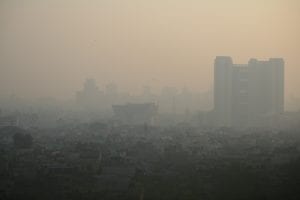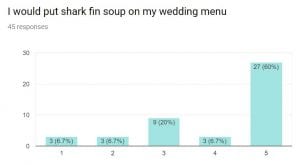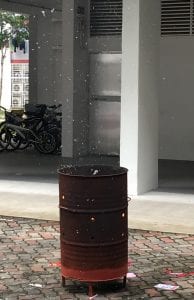As this academic semester draws to a close, this chapter of my blogging journey also comes to an end. I thought it would be appropriate to end with what inspired my topic for this blog – Christmas. It’s the time of the year again!
Before everyone breaks into a gift-shopping frenzy, I would like to highlight some issues that come with this festive season.
Gifts
The problem does not lie in the culture of gift-giving itself, but in the types of gifts that we choose. With Christmas comes Secret Santa games and company gift exchanges, where more often than not, we receive gifts that we do not actually need or want. Eventually, these unwanted gifts may end up not being utilized and dumped in the landfill. The packaging that comes with the gift is also a major contributor to Christmas waste. In the UK, close to 100 million bags filled with packaging from toys and presents go to the landfill every Christmas (Francis, 2017).
Mariah Carey’s Christmas hit – All I want for Christmas is you
If everyone was like Mariah Carey, we would never have to worry about the amount of trash gift wrapping creates during the most wonderful time of the year.
Decorations
Christmas lights in Orchard are iconic of celebrations in Singapore. Last year, organisers thought it would be wise to turn on the lights from as early as 3pm in the afternoon. However, it went unnoticed to most people and added to the large amount of electricity needed to power up the Christmas lights. Thankfully, they decided not to do that this year.
What happens to the Christmas lights and decorations after Christmas? While some malls will reuse decorations where possible to save cost (Tan, 2017), most of the decorations will probably still end up being trashed to make way for new decorations that meet consumers’ expectations in the novelty aspect.
What organisers could do would be to give the decorations away to the public, to give the lights and decorations a second lease of life. This is what organisers have done with Chinese New Year lanterns (Chia, 2016).
My Takeaways
Through this blogging journey, I realized that many celebrations are intertwined with culture and sometimes religion. Take for example, the Hungry Ghost Festival and the Yi Peng Festival. This makes it difficult for governments to regulate the environmental impacts of celebrations through laws and bans. The most immediate solution that individuals like us can take up is thus to make more conscious choices in what we purchase and through our actions.
References:
Chia, R. (14 Feb 2016). Chinatown’s monkey lanterns up for grabs
Retrieved from: https://www.straitstimes.com/singapore/chinatowns-monkey-lanterns-up-for-grabs
Francis, G. (20 Dec 2017). Christmas: Brits will throw away 108m rolls of wrapping paper this year, waste study finds
Retrieved from: https://www.independent.co.uk/life-style/christmas/christmas-waste-total-wrapping-paper-food-scraps-packaging-sticky-tape-study-a8119821.html
Tan, S.A. (19 Nov 2017). Malls all decked out for Christmas without spending more
Retrieved from: https://www.straitstimes.com/singapore/malls-turn-on-the-charm


















